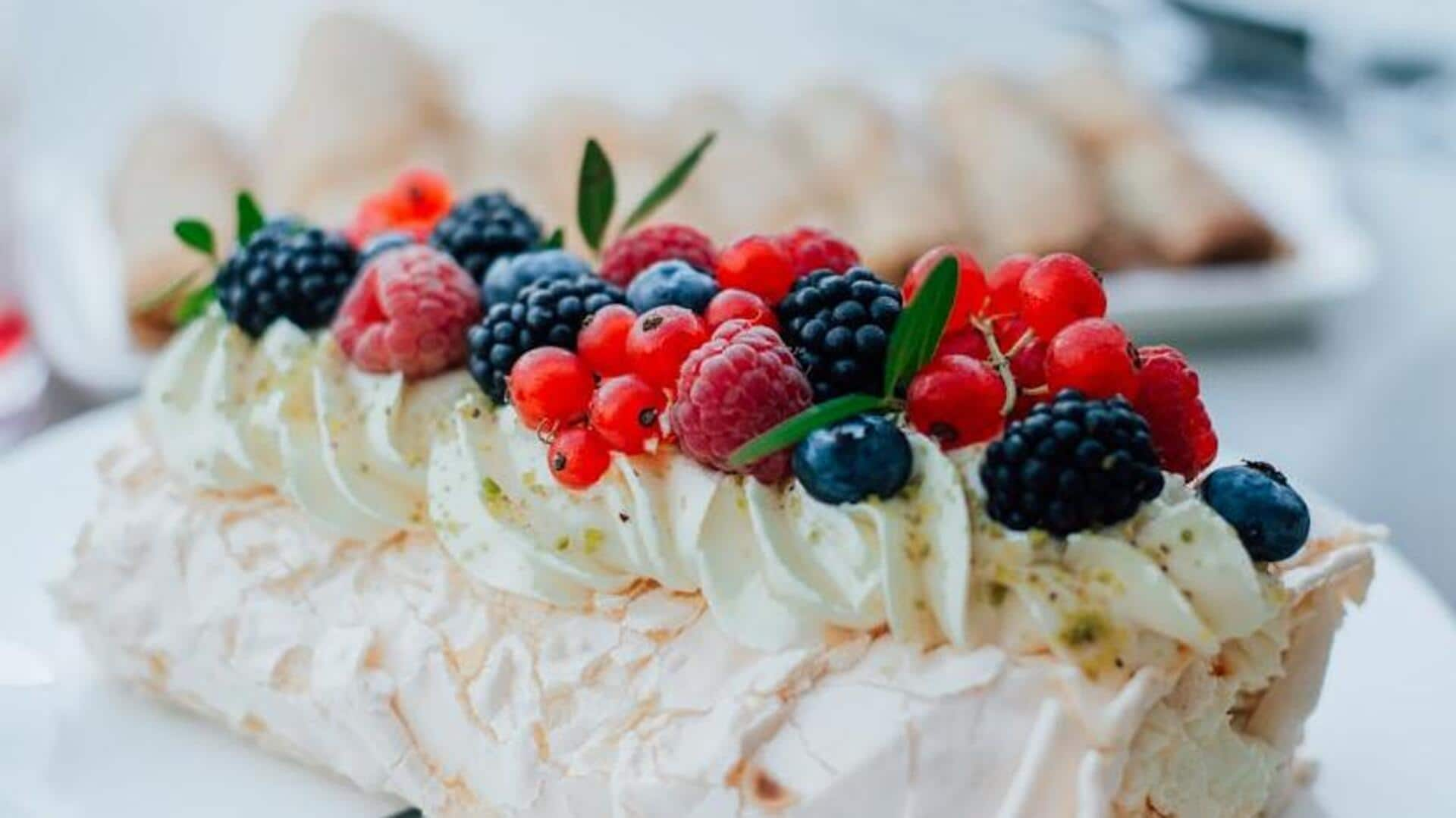
The blissful harmony of pavlova's creation
What's the story
The pavlova, a delicate meringue-based dessert named after the Russian ballerina Anna Pavlova, has sparked a friendly rivalry between Australia and New Zealand for decades. Both nations claim its creation, turning it into a "delicious symbol of national identity." This article explores the history, evolution, and cultural significance of this cherished dessert.
Origin
Origin and naming controversy
The pavlova was invented in the early 20th century, but who made it first—Australia or New Zealand—is still a matter of (mostly) friendly debate. It was named after the legendary ballerina Anna Pavlova during one of her tours to Australia and New Zealand in the 1920s. The dessert was intended to emulate her lightness and grace, qualities reflected in its airy structure.
Evolution
Recipe evolution over time
The original pavlova recipe called for egg whites and sugar, beaten to stiff peaks and baked at a low temperature to achieve a crisp exterior and soft, marshmallow-like interior. Later, cornflour was introduced to stabilize the meringue, and vinegar was added to help create a more tender center. Initially, they were served with whipped cream, but now they are often adorned with fresh fruits like kiwi, strawberries, and passionfruit.
Significance
Cultural significance in Australia and New Zealand
In both Australia and New Zealand, the pavlova isn't just a dessert; it's a battleground for national pride, particularly on Christmas and summer celebrations. Its omnipresence at communal gatherings is a testament to its role as a gastronomic glue that binds communities together. Competitions for the best pavlova recipe are a regular affair, highlighting regional variations that are a true reflection of local tastes and the use of seasonal fruits.
Globalization
Modern interpretations and global reach
As the world of food gets more global, chefs everywhere have fallen in love with the pav. They're keeping the spirit alive while adding their own delicious spins. Think exotic fruits like mangoes or lychees, or maybe a drizzle of caramel or chocolate sauce instead of the traditional passionfruit. It's all about keeping that pavlova essence while making it your own.
Tips
Tips for perfecting your own pavlova
Striking the ideal pavlova balance can be tricky, but these tips will ensure a deliciously successful result. Ensure a completely grease-free mixing bowl. Use eggs at room temperature. Gradually add sugar while continuously beating the egg whites and resist the temptation to open the oven during baking (this helps prevent cracks). Allow it to cool inside the oven after switching it off (this minimizes the risk of collapse).